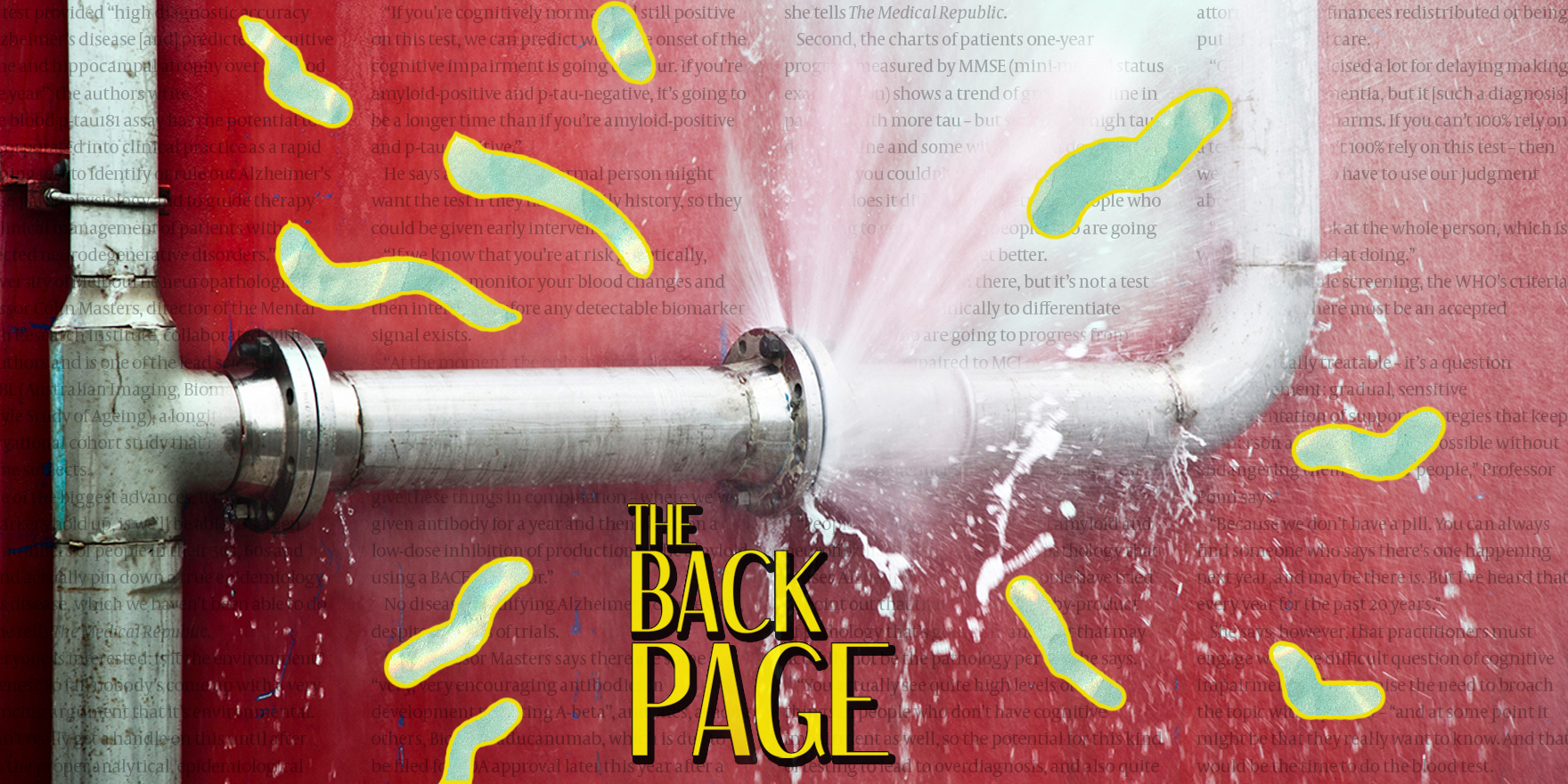In which your fearless correspondent takes a deep dive into the plumbing, and the possibility that faecal aerosols are transmitting COVID.
Just when you thought COVID couldn’t get any more horrific…
Chinese researchers have uncovered some evidence that COVID-19 might be hitching a ride on faecal aerosols in apartment buildings.
The study, published in the Annals of Internal Medicine on 1 September, was first spotted by our COVID-19 blogger Bianca, who says she “couldn’t stomach writing about faecal aerosols”.
Never fear: The Back Page will go where the Catchup feared to tread… Because who doesn’t want to read a study entitled “Probable Evidence of Fecal Aerosol Transmission of SARS-CoV-2 in a High-Rise Building”?
In this study, researchers looked at the spread of COVID-19 in an apartment building in Guangzhou, China between January and February.
While the elevators and common areas were COVID-free, there was one place in the building teeming with COVID particles: the toilets.
The apartments that were on top of each other had bathrooms that were connected to the same drainage and ventilation systems, which led the researchers to suspect that COVID was travelling in the air between apartments in the form of, there’s that phrase again, faecal aerosols.
The swabs of the master bathrooms came back positive, suggesting that these were the “probable source and exposure venues”, the researchers said.
Previous studies have indicated that COVID-19 can be found in faeces, and faecal-oral transmission has been suspected.
To test whether these aerosols could make it through this winding plumbing and ventilation system into a neighbours’ bathroom, the researchers released tracer gas into the black water pipe through the toilet in one flat for half an hour.
They found the gas seeped into all the adjacent flats, indicating that this could be a pathway for COVID transmission too.
To rule out and other routes of transmission, the researchers tested for COVID on 60 surfaces and took four air samples across the building, including elevators, ventilation grills, and vent outlets on the roof. All of these sites tested negative.

The team took regular throat swabs of all 217 people in the building, including several families who lived in apartments vertically adjacent to each other.
Most of the families in the building were COVID-negative but some were positive.
The COVID + and – families did not come into close contact because they did not know each other and it was a period of social isolation, so they did not leave the apartment often.
Video footage showed that the COVID+ and COVID- families didn’t share a lift with each other during the possible infectious period. There were also no traces of COVID viral particles in the elevator air supply inlets or the elevator buttons.
“[The researchers] describe a situation in which infectious aerosols may have been formed as the result of turbulent flows within a wastewater plumbing system containing virus-laden faeces,” the accompanying editorial said.
“Although evidence is building, it is not yet strong enough to warrant wide-scale intervention – but does warrant some precautions,” Associate Professor Michael Gormley from the Heriot-Watt University in Edinburgh in the UK wrote in the editorial.
We should think about developing methods to regulate wastewater systems to reduce the risk of these acting as pathogen reservoirs, he said.
See something stupid, say something stupid… send your COVID-proof plumbing designs to felicity@medicalrepublic.com.au


